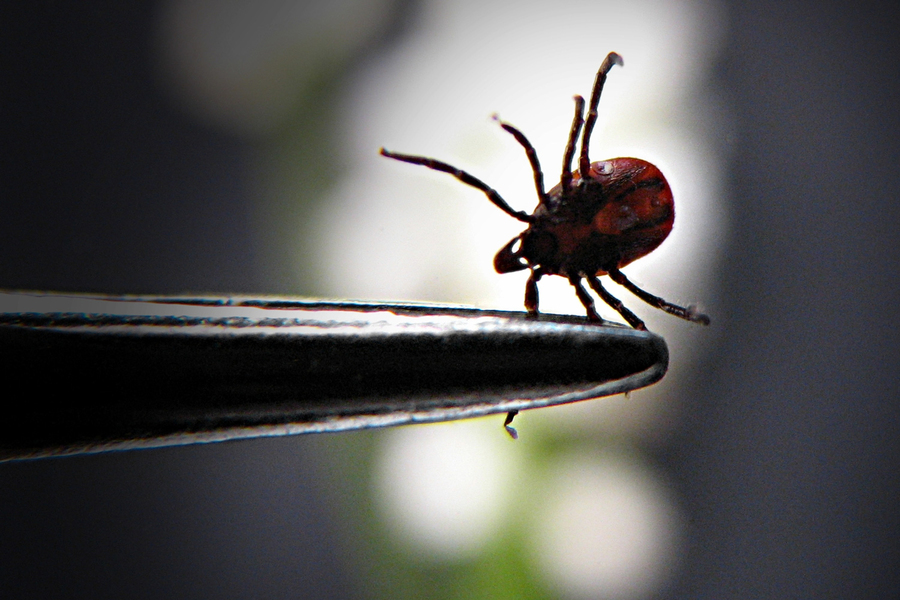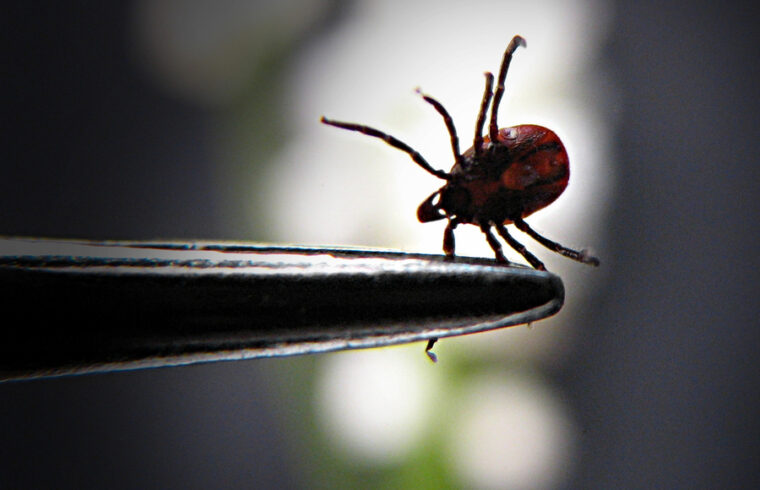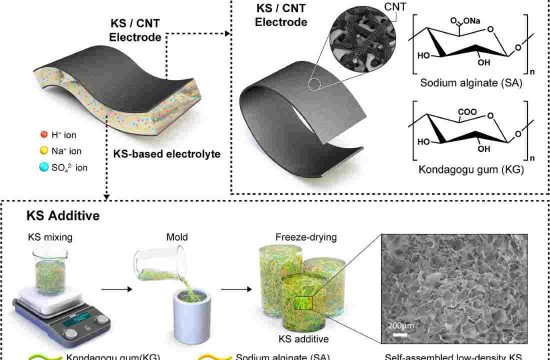Researchers also found that a variant of the protein is not as protective against the bacteria and increases susceptibility to the disease.

CAMBRIDGE, MA — Lyme disease, a bacterial infection transmitted by ticks, affects nearly half a million people in the United States every year. In most cases, antibiotics effectively clear the infection, but for some patients, symptoms linger for months or years.
Researchers at MIT and the University of Helsinki have now discovered that human sweat contains a protein that can protect against Lyme disease. They also found that about one-third of the population carries a genetic variant of this protein that is associated with Lyme disease in genome-wide association studies.
It’s unknown exactly how the protein inhibits the growth of the bacteria that cause Lyme disease, but the researchers hope to harness the protein’s protective abilities to create skin creams that could help prevent the disease, or to treat infections that don’t respond to antibiotics.
“This protein may provide some protection from Lyme disease, and we think there are real implications here for a preventative and possibly a therapeutic based on this protein,” says Michal Caspi Tal, a principal research scientist in MIT’s Department of Biological Engineering and one of the senior authors of the new study.
Hanna Ollila, a senior researcher at the Institute for Molecular Medicine at the University of Helsinki and a researcher at the Broad Institute of MIT and Harvard, is also a senior author of the paper, which appears today in Nature Communications. The paper’s lead author is Satu Strausz, a postdoc at the Institute for Molecular Medicine at the University of Helsinki.
A surprising link
Lyme disease is most often caused by a bacterium called Borrelia burgdorferi. In the United States, this bacterium is spread by ticks that are carried by mice, deer, and other animals. Symptoms include fever, headache, fatigue, and a distinctive bulls-eye rash.
Most patients receive doxycycline, an antibiotic that usually clears up the infection. In some patients, however, symptoms such as fatigue, memory problems, sleep disruption, and body aches can persist for months or years.
Tal and Ollila, who were postdocs together at Stanford University, began this study a few years ago in hopes of finding genetic markers of susceptibility to Lyme disease. To that end, they decided to run a genome-wide association study (GWAS) on a Finnish dataset that contains genome sequences for 410,000 people, along with detailed information on their medical histories.
This dataset includes about 7,000 people who had been diagnosed with Lyme disease, allowing the researchers to look for genetic variants that were more frequently found in people who had had Lyme disease, compared with those who hadn’t.
This analysis revealed three hits, including two found in immune molecules that had been previously linked with Lyme disease. However, their third hit was a complete surprise — a secretoglobin called SCGB1D2.
Secretoglobins are a family of proteins found in tissues that line the lungs and other organs, where they play a role in immune responses to infection. The researchers discovered that this particular secretoglobin is produced primarily by cells in the sweat glands.
To find out how this protein might influence Lyme disease, the researchers created normal and mutated versions of SCGB1D2 and exposed them to Borrelia burgdorferi grown in the lab. They found that the normal version of the protein significantly inhibited the growth of Borrelia burgdorferi. However, when they exposed bacteria to the mutated version, twice as much protein was required to suppress bacterial growth.
The researchers then exposed bacteria to either the normal or mutated variant of SCGB1D2 and injected them into mice. Mice injected with the bacteria exposed to the mutant protein became infected with Lyme disease, but mice injected with bacteria exposed to the normal version of SCGB1D2 did not.
“In the paper we show they stayed healthy until day 10, but we followed the mice for over a month, and they never got infected. This wasn’t a delay, this was a full stop. That was really exciting,” Tal says.
Preventing infection
After the MIT and University of Helsinki researchers posted their initial findings on a preprint server, researchers in Estonia replicated the results of the genome-wide association study, using data from the Estonian Biobank. These data, from about 210,000 people, including 18,000 with Lyme disease, were later added to the final Nature Communications study.
The researchers aren’t sure yet how SCGB1D2 inhibits bacterial growth, or why the variant is less effective. However, they did find that the variant causes a shift from the amino acid proline to leucine, which may interfere with the formation of a helix found in the normal version.
They now plan to investigate whether applying the protein to the skin of mice, which do not naturally produce SCGB1D2, could prevent them from being infected by Borrelia burgdorferi. They also plan to explore the protein’s potential as a treatment for infections that don’t respond to antibiotics.
“We have fantastic antibiotics that work for 90 percent of people, but in the 40 years we’ve known about Lyme disease, we have not budged that,” Tal says. “Ten percent of people don’t recover after having antibiotics, and there’s no treatment for them.”
The researchers note that people who have the protective version of SCGB1D2 can still develop Lyme disease, and they should not assume that they won’t. One factor that may play a role is whether the person happens to be sweating when they’re bitten by a tick carrying Borrelia burgdorferi.
SCGB1D2 is just one of 11 secretoglobin proteins produced by the human body, and Tal also plans to study what some of those other secretoglobins may be doing in the body, especially in the lungs, where many of them are found.
“The thing I’m most excited about is this idea that secretoglobins might be a class of antimicrobial proteins that we haven’t thought about. As immunologists, we talk nonstop about immunoglobulins, but I had never heard of a secretoglobin before this popped up in our GWAS study. This is why it’s so fun for me now. I want to know what they all do,” she says.
The research was funded, in part, by Emily and Malcolm Fairbairn, the Instrumentarium Science Foundation, the Academy of Finland, the Finnish Medical Foundation, the Younger Family, and the Bay Area Lyme Foundation.








